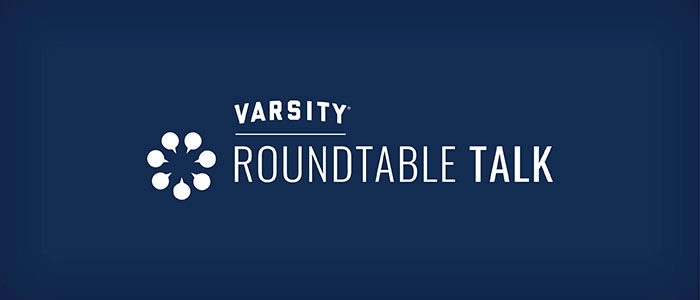What does it take to age well together? On Varsity’s Roundtable Talk, Barbara Sullivan, National Director of the Village to Village Network, shared how the growing “village movement” is helping older adults stay independent while staying connected, redefining what it means to age in place.
Derek and Barbara discussed how villages serve the “missing middle,” the vital role of volunteers, and creative partnerships with senior living, healthcare, and faith-based groups. Barbara also shared how villages combat social isolation and her vision to expand the movement.
The following are some fresh perspectives from the conversation. Check out the full episode here.
HOW DO YOU EXPLAIN THE CORE PHILOSOPHY BEHIND THE VILLAGE MOVEMENT?
You know, the village model was created to serve that missing middle, the middle class. It started up in Boston about 25 years ago. It’s an alternative to aging at home — aging in your community — with practical, community-driven support services. Most of the villages are volunteer first, so it’s about neighbor helping neighbor, keeping people active, engaged, and independent.
WHAT INSPIRED THE FOUNDING OF THE VILLAGE TO VILLAGE NETWORK, AND HOW HAS IT EVOLVED SINCE THEN?
The founding was in Boston, when a group of homeowners in the Beacon Hill section said, “We love our homes and neighborhoods — how do we stay here?” Affordability was a factor, too. They opened in 2002, and by 2007, The New York Times wrote about the movement, and it exploded. You saw villages popping up everywhere — Washington, D.C., California, Chicago — all building on that same model of community and independence.
HOW DID YOU FIRST GET INVOLVED WITH THE VILLAGE MOVEMENT?
In 2007, I was an assisted living administrator in Northern Virginia when a group of homeowners approached me about starting a village. My company wasn’t thrilled — they wanted people to move into the community, not stay home — but I fell in love with the model. I joined their board, and by 2010, I was running the village. My passion for older adults really came from my father, who chaired the House Select Committee on Aging. I grew up visiting nursing homes with him — that’s where I caught the bug.
WHAT MAKES THE VILLAGE MODEL DIFFERENT FROM TRADITIONAL SENIOR LIVING COMMUNITIES?
Number one, people are living in their own homes — and more importantly, in their own communities. Villages help people stay independent and live on their own terms. Some people will still need to move into senior living, and that’s okay — we often partner with those communities. We share programs, sponsor events together, and build on each other’s strengths. It’s not competition — it’s collaboration.
WHAT DOES “THE MISSING MIDDLE” MEAN, AND WHY DOES THE VILLAGE MODEL MATTER FOR THAT GROUP?
The “missing middle” are people who can’t afford life-care communities but also don’t qualify for government services. They’re independent but might need small supports — like a ride, help around the house, or connection to community programs. Villages connect those dots. They help people find what’s already in their community and bring purpose back through engagement and volunteering.
WHAT ARE YOUR HOPES FOR THE FUTURE OF THE VILLAGE MOVEMENT?
In five years, I’d love to add 500 villages — a hundred a year. Realistically, that’s a stretch, but we can aim high. We already have about 150 villages that are more than ten years old, which shows the model works. I see more partnerships ahead — with healthcare systems, senior living, and organizations like LeadingAge. We’re here to stay, and the future is about scaling and sustainability through collaboration.
Want to hear more from Barbara? Check out the full episode of Roundtable Talk for more fresh perspectives. Watch new episodes of Roundtable Talk on the Varsity website and on Apple Podcasts, Spotify, and iHeartRadio.



